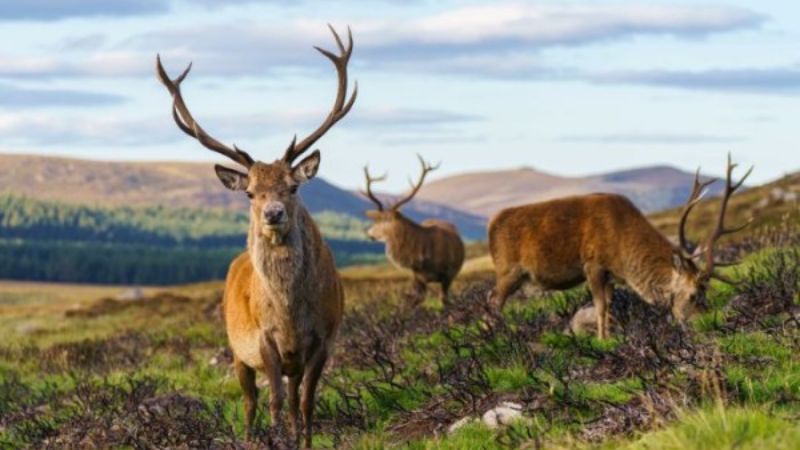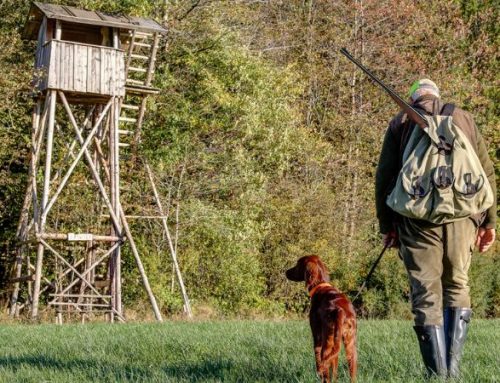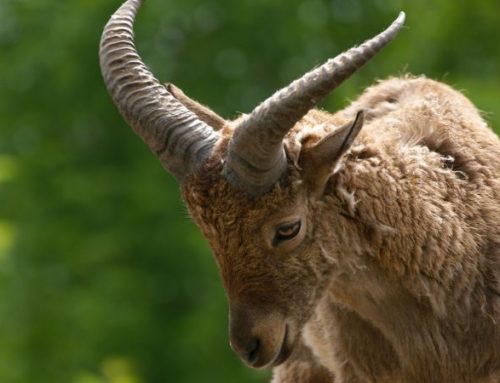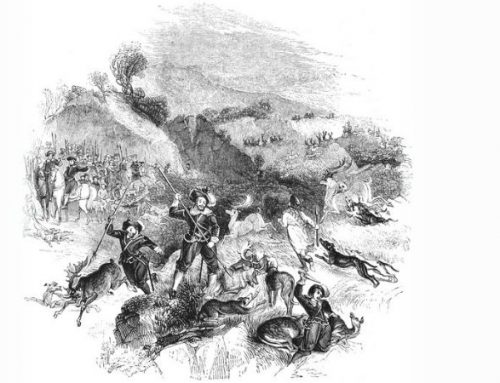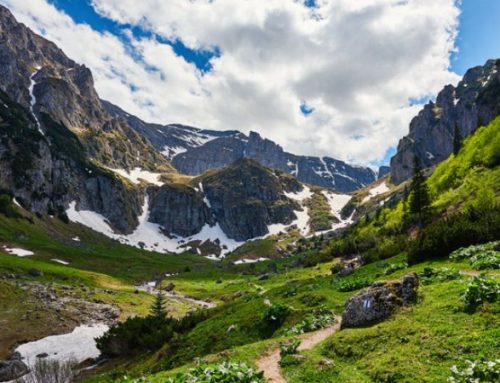Luca, a lover of hunting and nature, experiences both in an all-encompassing way, combining this with his passion for travel, deer hunting in Scotland.
He defines himself as a “traveler with a rifle.”
He has accumulated hunting experiences in every known part of the world, starting from the African continent but also in Asia, America, and Europe!
Today, he wants to tell you about one of his hunting experiences in the old continent: red deer hunting in Scotland.

“The darkness dissipates and the clouds roll across an ashen sky. The bogs, disappointed by the lack of even a faint sun, show their displeasure by voraciously swallowing my boots.
The climb up the steep slope becomes more challenging, and the low heather fails to make the ground any more stable: the unusual stag that appeared at the edge of the ridge seems to have vanished, but I persist in my ascent.
Upon reaching the summit, I crouch on a rock less wet than the rest of the ground, and begin to scan the valley with my binoculars, yet I find no trace of the stag.”
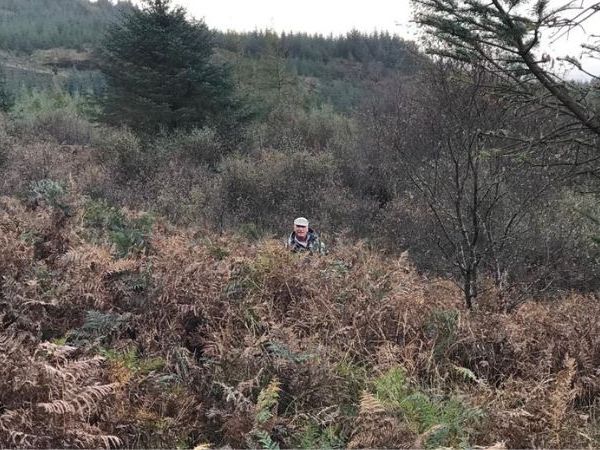
A faint bellow to my left reveals the presence of another animal beyond a ridge. After catching my breath, I head in that direction. Descending into the valley, I follow a deer trail and emerge slightly higher on a plateau of bronzed ferns.
About a hundred meters away, a fine ten-point stag seems to burst from the ground, surprising me with a wild dash that halts at the edge of the fir trees. I lie down, extend the bipod while calculating the distance with the rangefinder: too late! The stag slips between the pines and disappears from sight.
In the magnificent amphitheater, the sun appears with curtains of light that dazzle, while the clouds, in a clumsy attempt to block the sun’s explosion, contribute to the place’s allure with strange effects, perhaps a witness to ancient warrior clashes.
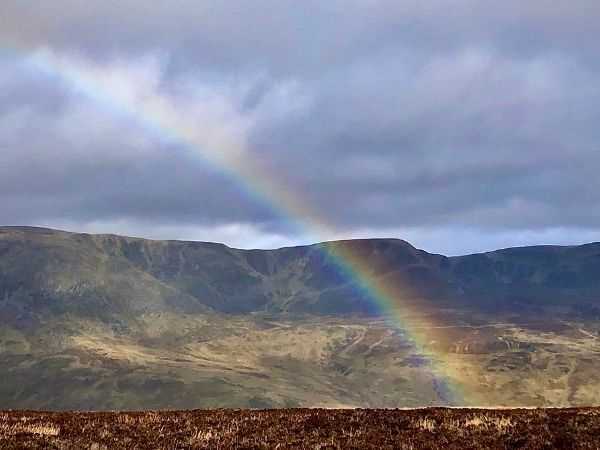
Descending back to the valley, I head toward the path that twists through the moors like a serpent. At the meeting point, the off-road vehicle is already waiting for me. The sun has finally broken through, and now every hill and tree shines with reflected light.
On one of the ridges that form the amphitheater’s crown, the silhouette of a hind stands out clearly against the blue sky…
The experiences in Glen Clova are endless: the small hotel with a sitting room by the fireplace, its steep moors, the presence of fine Scottish red deer and grouse, white hares, and roe deer. Not to mention the chance to take down one of the “royal family” stags that often wander into our area from the neighboring Balmoral Estate.
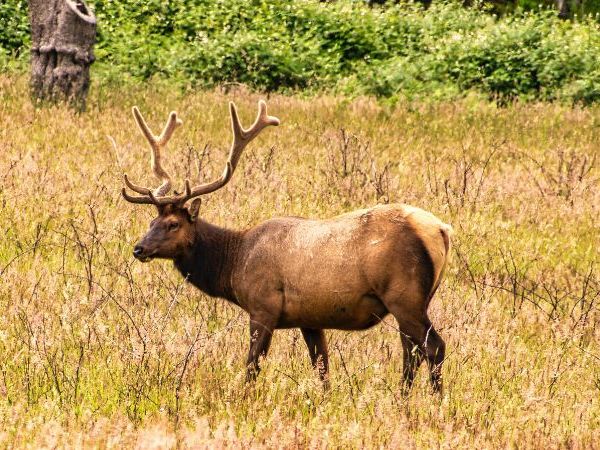
An example of a Scottish deer still in “velvet”
The Scottish red deer belongs to the species “Cervus elaphus”, but it is smaller and has more slender antlers compared to the Eastern European deer. This difference is likely due to a poorer diet consisting mainly of pine shoots and grasses high in water content.
This does not diminish the intensity of the hunt, which is primarily conducted by stalking with the assistance of a gamekeeper, tracking the animals from valley to valley through heather and peat.
Returning with a fine “royal stag,” carried either on horseback or with a modern all-terrain vehicle, you sit by the fireplace to sip a peaty whisky, simply diluted with a drop of spring water.
Deer hunting takes place in Perthshire, among the vast moors of the Glen Clova area, bordering Balmoral, the Scottish estate of the royal family.
If you are a fan of big game hunting, you must experience deer hunting in Scotland at least once. Amidst stunning landscapes and charming atmospheric inns, this is one of the most classic and popular hunts, a true tradition in the country!
The Scottish Red Deer
The Scottish red deer (Cervus elaphus scoticus) and the continental red deer (Cervus elaphus) are both subspecies of the common red deer, but they have some distinctive differences.
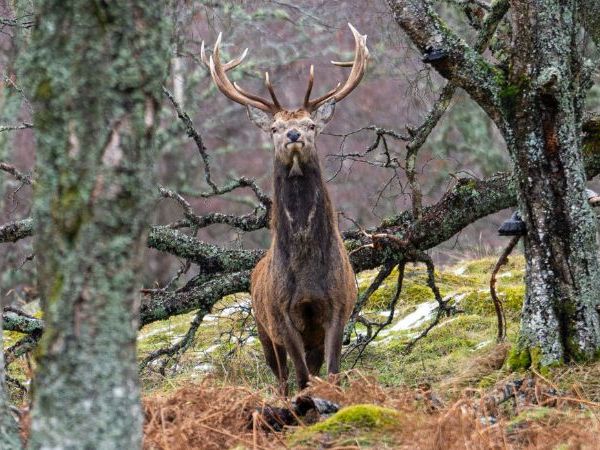
The Scottish red deer is a smaller subspecies compared to the continental red deer. It has a shorter, denser coat, often darker with a deeper red hue. Its antlers (often mistakenly called “horns”) tend to be shorter and thicker than those of the continental red deer. Additionally, the antlers of the male Scottish red deer branch out more widely and appear more compact compared to those of the continental subspecies.
Deer hunting in Perthshire, Scotland, is a deeply rooted tradition in this region. Perthshire is renowned for its vast countryside and forests, ideal habitats for the Scottish red deer. Deer hunting is primarily conducted during the hunting season, usually from late summer to early autumn, coinciding with the rutting season.
Hunters engage in stalking across hunting grounds, accompanied by professional guides, using techniques such as ambushing or calling to attract dominant stags. Successful deer hunting requires a thorough knowledge of the terrain, the behavioral patterns of the deer, and silent approach techniques. Great emphasis is placed on hunting ethics, with strict regulations to ensure the sustainability and conservation of the deer population.
Hunters must obtain the necessary permits and adhere to Scottish deer hunting laws, which include limits on the number of animals that can be taken and restrictions on the size and characteristics of hunting trophies. Deer hunting in Perthshire is often regarded not only as a sport but also as a responsible way to manage deer populations and maintain the balance of local ecosystems.
If you are a big game hunting enthusiast, experiencing deer hunting in Scotland is a must. With breathtaking landscapes and charming atmospheric inns, this hunt is one of the most traditional and sought-after experiences in the country. The Perthshire region offers an authentic and enriching hunting adventure, reflecting Scotland’s rich heritage and commitment to wildlife conservation.
Perthshire: a hunter’s paradise
In Perthshire, in addition to deer hunting, there are several other forms of hunting practiced depending on the season, local regulations and the availability of suitable habitat. Some of the other forms of hunting that may be practiced in Perthshire include:
Roe deer hunting: The roe deer is another species of cervid present in the region. Roe deer hunting can be practiced in specific seasons with the relevant authorizations and in compliance with the regulations.
Pheasant and Partridge Hunting: Hunting of birds such as pheasants and partridges is common in many rural areas of Perthshire. Typically, this hunt occurs in specific seasons and may involve trained hunting dogs.
Duck and other waterfowl hunting: Wetlands and streams provide habitat for a variety of waterfowl species. Hunting ducks and other waterfowl species may be practiced according to specific laws and seasons.
Rabbit and other small mammal hunting: Hunting of species such as wild rabbits and other small mammals can be practiced in certain areas and seasons, following local regulations and respecting current regulations.
Hunting of thrush and other migratory bird species: Hunting of migratory bird species such as the thrush may be permitted under certain circumstances and during specific seasons, subject to migratory hunting laws.

